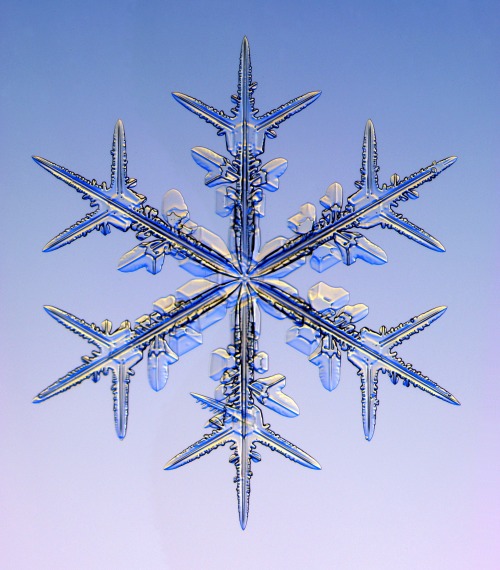 This morning Colorado Springs had some of the lightest, prettiest snow I've ever seen. The kind where you can almost sweep your walk with a strong breath and brush the snow off your car just by looking at it. A closer look shows perfect, six-armed dendrite crystals -- the classic "snowflake" that is so rare. Why did the snow form this way? A few reasons:
This morning Colorado Springs had some of the lightest, prettiest snow I've ever seen. The kind where you can almost sweep your walk with a strong breath and brush the snow off your car just by looking at it. A closer look shows perfect, six-armed dendrite crystals -- the classic "snowflake" that is so rare. Why did the snow form this way? A few reasons: Most often snow falls as little disks or cylinders, but when the water vapor in the air is high relative to the temperature, and the air is very calm snowflakes will float around in the sky, adding water one molecule at a time. The molecular structure of an ice lattice leads it to grow in a six-sided fashion. Wind can destroy these delicate structures, but if it's very still, they'll settle to the ground intact. That's what happened last night.
To learn more about snowflake physics, including how scientists can be grow "designer snowflakes" in a laboratory, click here.
No comments:
Post a Comment